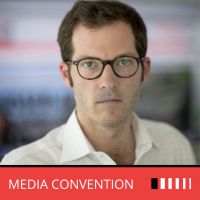Die Macht der Bilder – Zwischen Pressefreiheit und Menschenwürde
Kurzthese:
Beschreibung:
Das gilt aber nicht grenzenlos. Eine Grenze ist die Menschenwürde. Sie ist Grundpfeiler der Verfassung. Konkretisiert wird sie durch den Jugendmedienschutz-Staatsvertrag (JMStV), der u.a. regelt, dass Menschen, die sterben oder erheblichen körperlichen und seelischen Leiden ausgesetzt sind, nicht ohne ein berechtigtes Interesse dargestellt werden sollen.
Zwischen diesen beiden Prinzipien muss ein Ausgleich gefunden werden. Nicht selten stehen Medienmacher und Medienaufsicht dabei miteinander im Konflikt. Welcher Mittel der Berichterstattung darf sich die Presse bedienen? Wie wirken die Kriegsbilder auf Publikum, Opfer und Angehörige? Welche rechtlichen Grenzen müssen eingehalten werden?
_____
Note: The discussion will be held in German but will be translated into English.
Images of war, terribly wounded people, and destroyed buildings have been a regular part of daily media reporting since well before the conflict in Syria. Insofar as the press documents the extent of inhuman acts, destruction, and suffering, it is performing its informational function, producing a public sphere, and contributing to the formation of public opinion. It is protected in this role by the press freedom enshrined in the German Basic Law.
But this isn’t limitless. One such limit is human dignity, a fundamental pillar of the constitution. This is given concrete form in part through the Interstate Treaty on the Protection of Minors from Harmful Media (JMStV), which mandates that people who die or are subjected to significant bodily or mental suffering must not be depicted without a legitimate interest in doing so.
A balance must be found between these two principles. Media producers and media-oversight bodies often come into conflict on the issue. What reporting methods are the press allowed to employ? How do images of war affect the public, victims, and their families? What legal limits must be respected?







